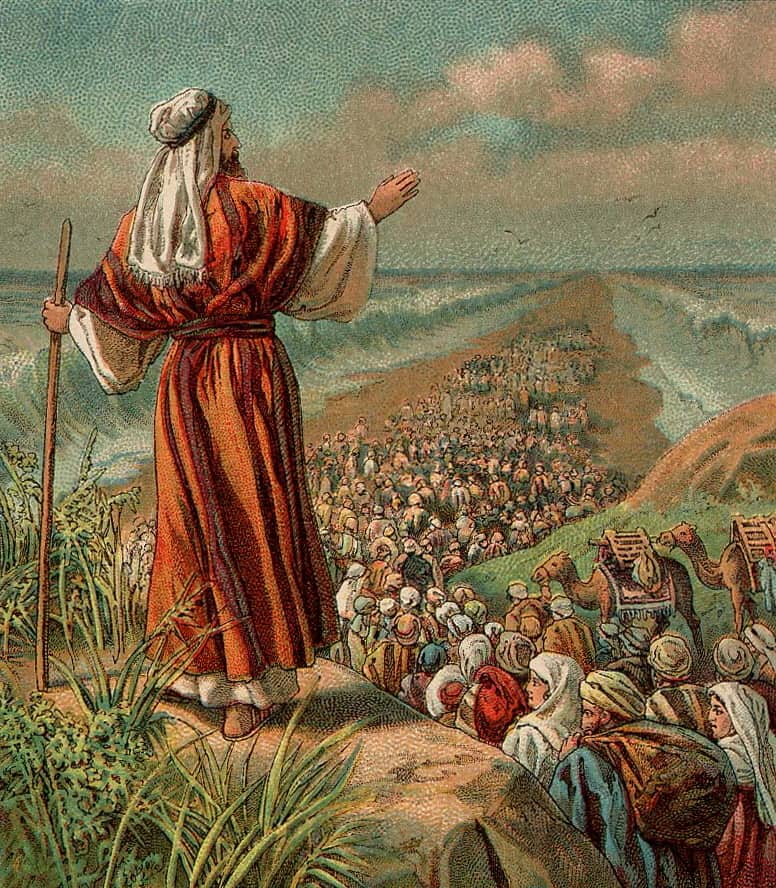The Hebrew Bible, known to Christians as the Old Testament, contains several stories of wars and conflicts involving the Israelites and other ancient peoples. Some of these tales are based on real events of history, while others have come to be regarded by archaeologists and biblical scholars as mythical. The first five books of the Bible recount the people of Israel’s enslavement in Egypt and their being led to the land promised them by God, under the leadership of Moses. Beginning with the Book of Joshua, wars of conquest and defense were initiated by the Israelites, to seize the Promised Land and to protect it from invasion.
Wars in the bible begin in the first book, Genesis, and God’s involvement in them is personal and direct. The Israelites fought in accordance to God’s commands in the bible stories, and their God assisted them in the destruction of cities and peoples, including the Amalekites (Exodus, Numbers, and Deuteronomy), the Canaanites (Numbers) and the Amorites (Numbers, Deuteronomy). Few of these wars can be proved, and God’s involvement is a question of faith rather than history. Such is the case with all of the biblical tales, though some are supported by historical references outside the Hebrew Bible, while others are not.

Here are just some of the wars and battles from the Old Testament and Hebrew Bible.

Joshua and the fall of Jericho
After Moses led the Israelites out of Egypt and to the edge of the Promised Land of the Canaanites, Joshua was directed to lead them in the capture of their cities. One of these was the walled city of Jericho. Through spies dispatched by Joshua to the city, he learned that the Canaanites were afraid of the power of the Israelites. Joshua directed his army to march around the walls of the city every day for a week, carrying with them the Ark of the Covenant. On the seventh day, they made seven trips around Jericho, after which they sounded their trumpets, fashioned from the horns of rams, and created a hue and cry.
According to the Book of Joshua, the walls of the city collapsed before the Israelites, who then slaughtered the population of the city, including men, women, and children. This was in accord with the law of herem, which appears in several biblical books, first in Deuteronomy, where it specifically lists six peoples who would contaminate Israel and were to be destroyed. The Hittites, Amorites, Perizzites, Hivites, Jebusites, and Canaanites, were all to be exterminated under this command. The Israelites destroyed homes, property and peoples, but retained gold, silver, iron, and bronze, as these items were of value to their own treasury.
Before the fall of Jericho Joshua’s spies had been hidden in the city by Rahab, described as a prostitute. Rahab hid the spies from Canaanite soldiers searching for them, and told them of the great fear of the Canaanites of the Israelites, including their knowledge of the parting of the Red Sea as they fled the Egyptians. Rahab and her family were spared in the massacre of the people of Jericho, allowed to join the Israelites despite the prohibition of herem. Rahab marked her home with a red cord to inform the Israelites that her house and family was under their protection. According to Joshua, her home was built into the walls of the city. How it survived the collapse of the walls is not discussed in the book.
Historical and archaeological scholars are nearly unanimous in dismissing the fall of Jericho as depicted in the Book of Joshua as being wholly fictional. The site of the city of Jericho was discovered in 1868 as Tell es-Sultan. Tell es-Sultan translates to Sultan’s Hill. Archaeological research including radiocarbon dating of the site indicates that the date of the abandonment of the site does not correspond with the accounts in the Book of Joshua. Archaeologist William Dever, a specialist in the history of ancient Israel and of the historicity of the Bible describes the story of the fall of Jericho as “…invented out of whole cloth.
Following the fall of Jericho, according to Joshua, the Israelite Achan pillaged gold, silver, and cloth, in violation of herem, which provided that such booty was the property of God. According to the book, this was the cause of the Israelites to fail in the first attempt to capture the city of Ai. When Achan’s perfidy was discovered the Israelites stoned him to death, after which God provided Joshua with a plan to capture Ai. When the city fell to the Israelites it was razed to the ground, and 12,000 Canaanite inhabitants were slaughtered by the victorious Israelites, though God gave them permission to keep the captured livestock.

